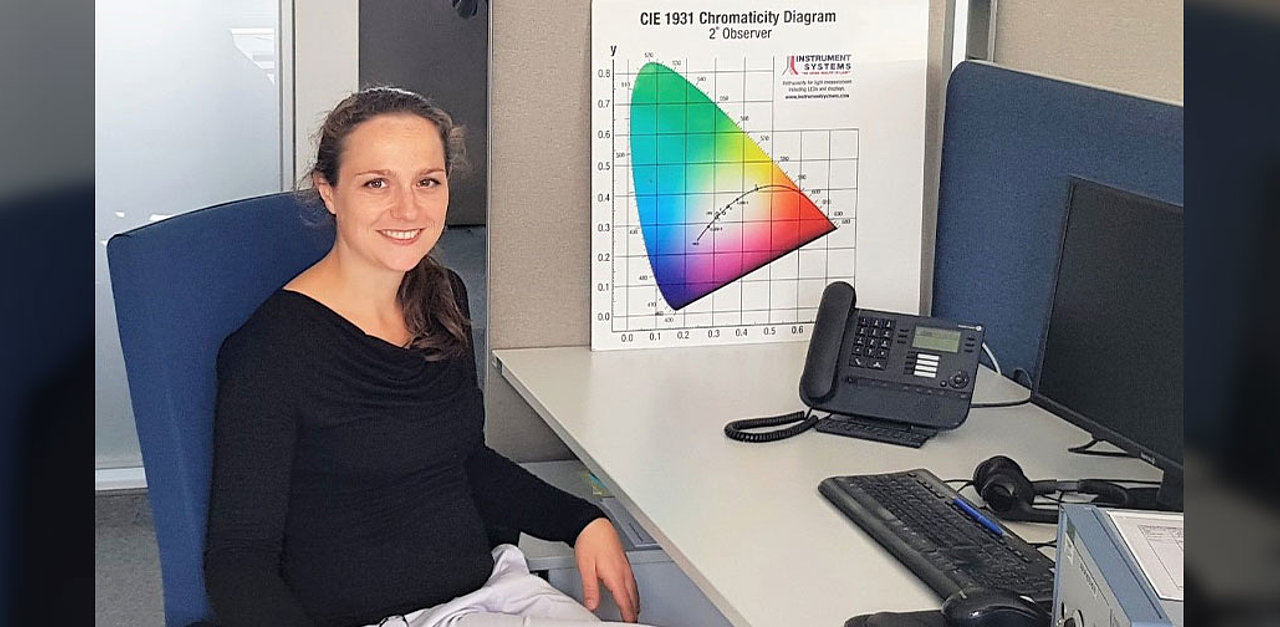Interview with Elisabeth Bothschafter
After having completed her PhD, our former colleague Elisabeth Bothschafter left the attoworld team for Switzerland, where she worked for two years as a postdoc at the Paul Scherrer Institute. Now she’s back in Munich and has moved to industry. Here she reviews her experiences over the past few years.
After completing your doctorate at the TU Munich and as a member of the attoworld team, you spent two years at the Paul Scherrer Institute in Switzerland. What were the factors that influenced this decision? I joined the PSI as a PSI Fellow funded by the European Commission’s Marie-Curie Actions programme because it was a great opportunity to further advance my knowledge of the behaviour of materials on ultrashort time scales, and it gave me the chance to work in larger international research teams. Joining Urs Staub’s group at the PSI also permitted me to participate in and conduct unique experiments at other large-scale facilities that provide ultrashort X-ray pulses, such as BESSY in Berlin, the LCLS in Stanford, USA, the SACLA in Osaka, Japan, and the Diamond Light Source in Didcot in the UK. Which area did you focus on in your research at PSI? Using a combination of strong femtosecond laser pulses and femtosecond X-ray pulses, I studied the exciting dynamics of strongly correlated electron and lattice dynamics. I focused on the investigation of a multiferroic material, TbMnO3, where I studied the dynamics of the melting of magnetic order. Another very exciting experiment I was involved in, together with a team from the ETH Zurich, PSI and the LCLS, was an investigation of the ultrafast Einstein-de Haas effect, in which the effect of demagnetization was revealed by the transfer of angular momentum from the spin system to the lattice within less than a picosecond. How was life in Switzerland? I travelled a lot during my time at PSI, both for work as well as privately, because my husband was working in the Netherlands while I was working in Switzerland. So I went back and forth about twice a month. But generally speaking, I really liked living in Switzerland. The scenery is beautiful and the food is great. The regular cheese fondue with the team, with a big pot of cheese melted over an open fire in the middle of the woods, was a real highlight. I lived in a small village close to PSI but regularly visited Baden and Zurich, which are close by. The people were very welcoming and relaxed, even at the local tax office. – And I learned that things can be done even more thoroughly and in a more organized fashion than in Germany – starting with the local recycling area, where cardboard is only accepted when folded neatly into A4 shape, up to the professional cleaning of the underside of your car before the mandatory technical inspection. Now you’re back in Munich and working in industry at Instrument Systems Optische Messtechnik GmbH. Why did you switch from research to industry? After my postdoc stay at PSI I came back to Germany with our first son, and after my maternity leave, I was looking for new opportunities. I had discovered during my time as a project coordinator at MPQ/LMU, and while working with different teams at PSI, that I really enjoy working with people and leading teams with a technical focus. So the position as Head of Metrology in the R&D department at Instrument Systems was the perfect combination of technical challenge and opportunity for personal growth. I could still do research in an industrial setting, but also learned more about managing a group and fulfilling internal as well as external expectations. In comparison to an academic job, there is more external motivation, aka clients, and for me personally it is more rewarding and diversified. What are your main tasks at Instrument Systems? I’m a group leader in the R&D department, which means that I’m responsible for about 10-12 people, both engineers and project leaders. Together with the project leaders, I manage the tasks of my team in the different development projects, and align the project goals with those of the company in terms of resources and client expectations. Together with my fellow group leaders and product management, I coordinate the development of new measurement solutions for our clients and the market. Recently I switched from metrology, which involved the development of calibration and measurement solutions to measure light with the highest accuracy, to developing solutions for camera-based display testing. Leading a new team and now developing the real measurement hardware are formidable new challenges. As a female physicist, you’re working in a male-dominated industry. Would you encourage other young women to do the same? I think everyone, no matter which gender or identity, should find something motivating, inspiring and challenging to pursue as a career. I truly believe that humans need positive challenges in their lives, in order to thrive and make the best of what is in them. And ideally they should do so in constant interaction with other people, asking questions and not being satisfied with the status quo. I found this in physics and in my current job. Laser technology is thought to have enormous potential. You studied and did your doctorate in ultrashort laser-pulse physics. What do you think will be possible with these techniques in about ten years? I think both in communications and in sensing, we will see an enormous impact of short-pulse technology. With the miniaturization and power of pulsed, vertical surface-emitting lasers (VCSELS) at various wavelengths, we will see numerous new inventions and applications, be it in self-driving cars or holographic video conferencing. Solid-state short-pulse systems will enable further gains in communication bandwidth and new applications in our everyday lives.